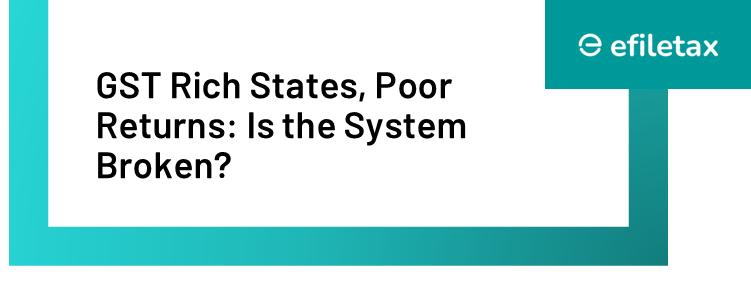
GST Revenue Distribution: Are India’s Top-Contributing States Getting Shortchanged?
India’s GST revenue distribution model, designed for equity, is once again at the center of a growing federal debate. In March 2025 alone, the gross GST collection stood at ₹1.96 lakh crore—up 9.9% year-on-year, as per official data from the Ministry of Finance. While this signals a healthy tax environment, disparities in fund allocation among states raise concerns of fairness, efficiency, and fiscal autonomy.
📊 Who Pays More, Who Gets Less? The Numbers Tell the Tale
Let’s look at state-wise contributions from FY2024-25 (till January):
- Maharashtra: ₹2,97,685 crore
- Karnataka: ₹1,31,949 crore
- Gujarat: ₹1,13,252 crore
- Tamil Nadu: ₹1,08,626 crore
These industrial powerhouses, especially Maharashtra (contributing nearly 35-45% of GST), are the backbone of India’s tax pool.
Yet, when it comes to funds received or refunded:
- Maharashtra’s GST refunds and settlements lag behind its contributions.
- Uttar Pradesh, contributing ₹93,100 crore, received ₹60,572 crore.
- West Bengal, contributing ₹55,268 crore, received ₹35,884 crore.
📌 Source: GSTN & Ministry of Finance data, Efiletax analysis based on March 2025 collections
⚖️ Why the Disparity? Understanding the GST Model
Under the GST (Compensation to States) Act, 2017, the central government compensates states for revenue loss due to GST implementation. However, this revenue-sharing model is based on consumption, not contribution.
🧾 This means:
- Consuming states (like UP, Bihar) benefit more than producing states (like Maharashtra, Gujarat).
- Cess collections go to the Centre, which are not shared under the divisible pool.
- IGST (Integrated GST) is settled between states and the Centre based on destination consumption, not origin of production.
📣 What State Leaders Are Saying
Several Chief Ministers and Finance Ministers voiced their discontent in 2024:
- Tamil Nadu CM MK Stalin criticized the lack of fiscal autonomy, stating: “There’s no right to ask what GST on cream bun is… we can do more if allocations are fair.”
- Kerala CM Pinarayi Vijayan, at the 16th Finance Commission conclave, demanded a 50% state share of central taxes.
- Punjab FM Harpal Singh Cheema raised concerns over CSS (centrally sponsored schemes) burdening state finances and reducing flexibility: “Post-GST, Punjab’s tax revenue and fiscal freedom have dropped considerably.”
🧮 March 2025 Snapshot – GST Collection Highlights
Component Amount (₹ Crore) YoY Growth Domestic Revenue 1,49,222 8.8% Imports 46,919 13.6% Total GST (Gross) 1,96,141 9.9% Net GST Revenue 1,76,526 7.3% Refunds (Total) 19,615 41.2% 📌 Source: CBIC, GSTN monthly revenue bulletin, March 2025